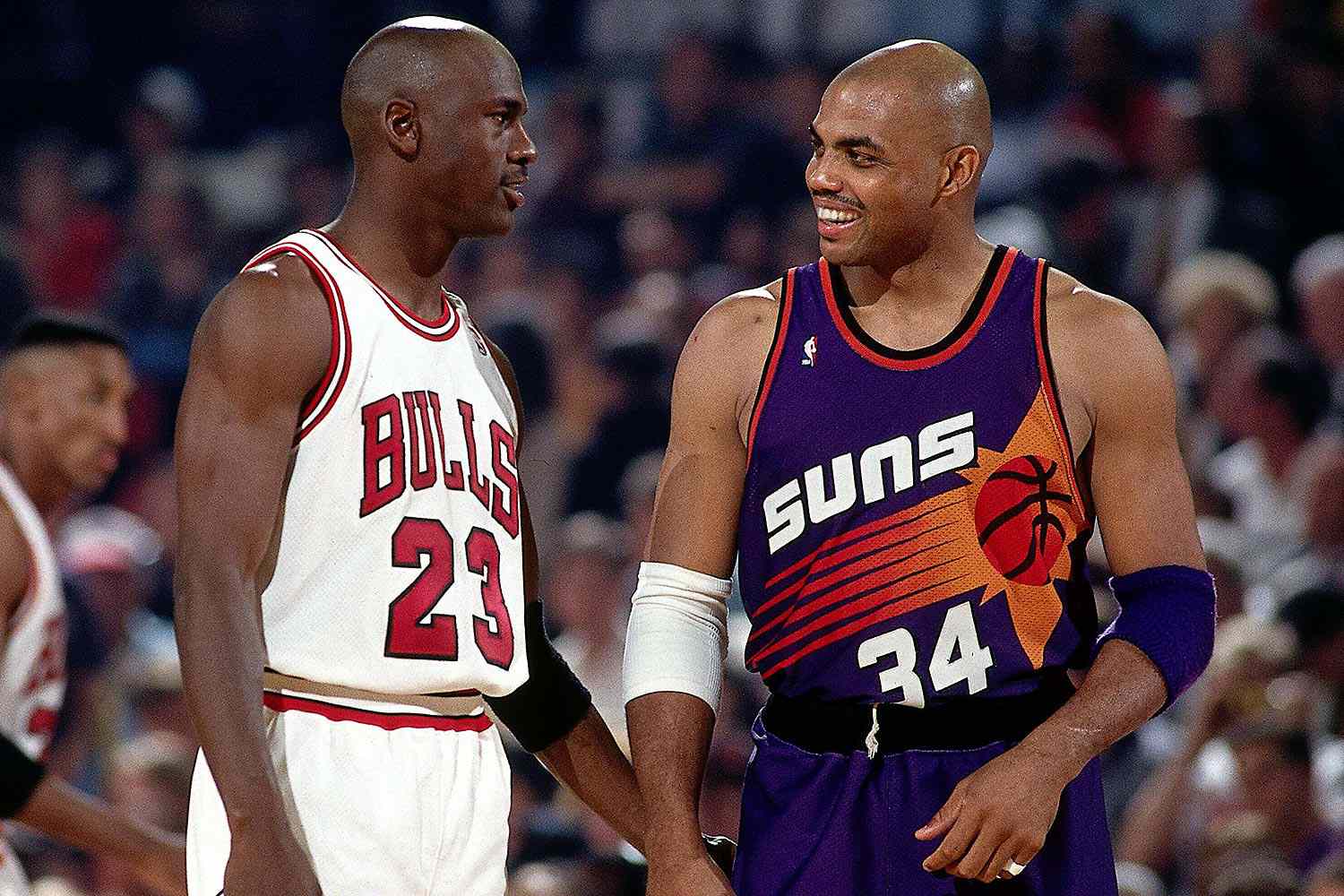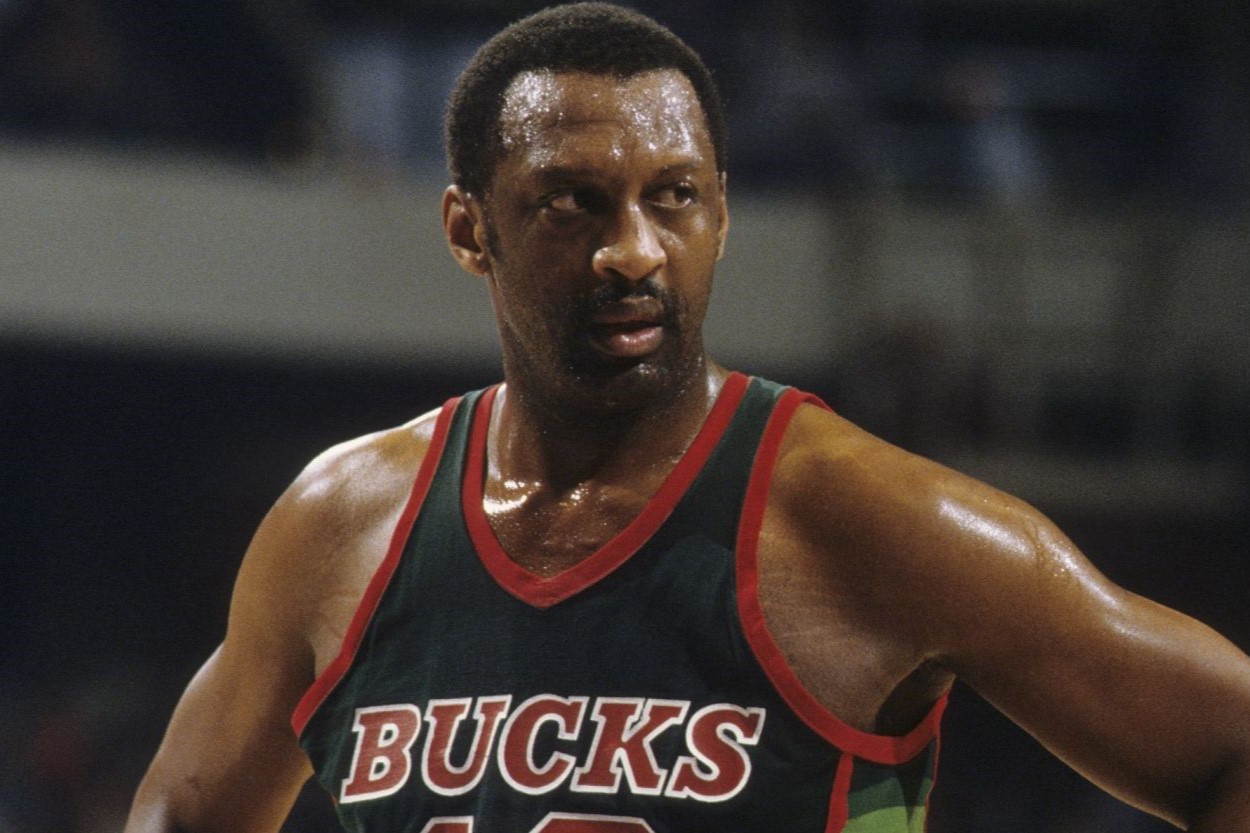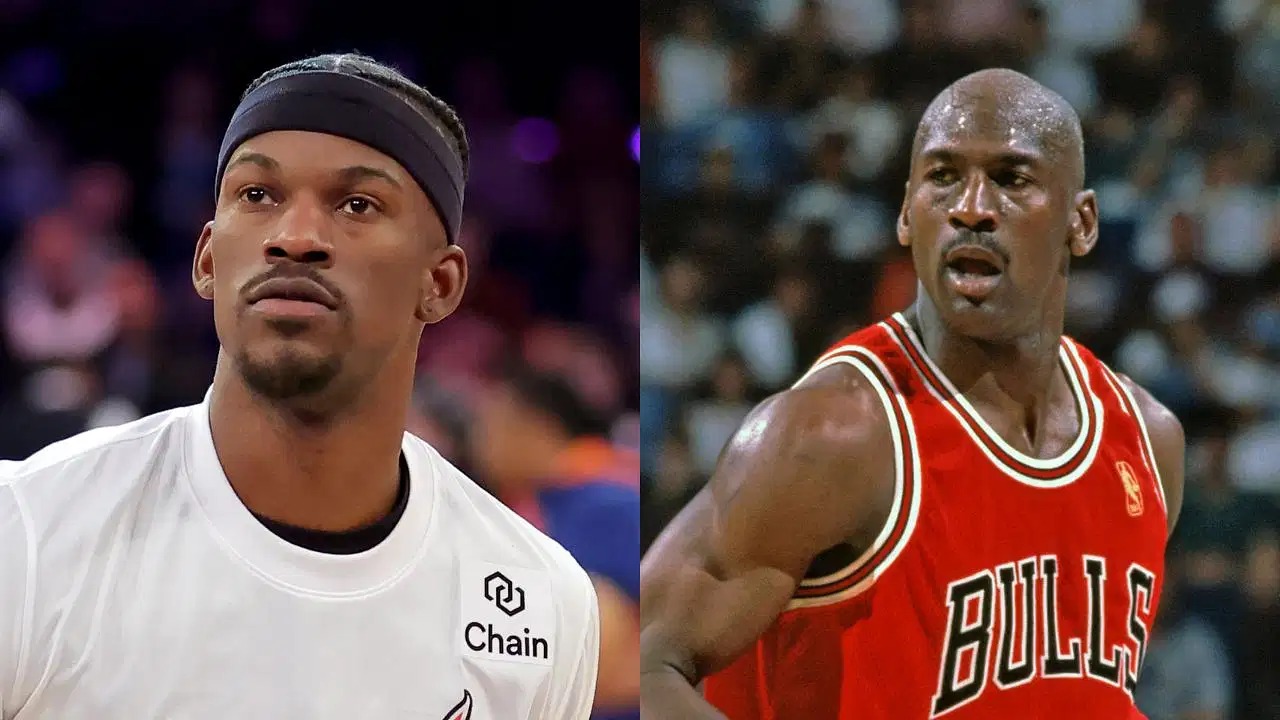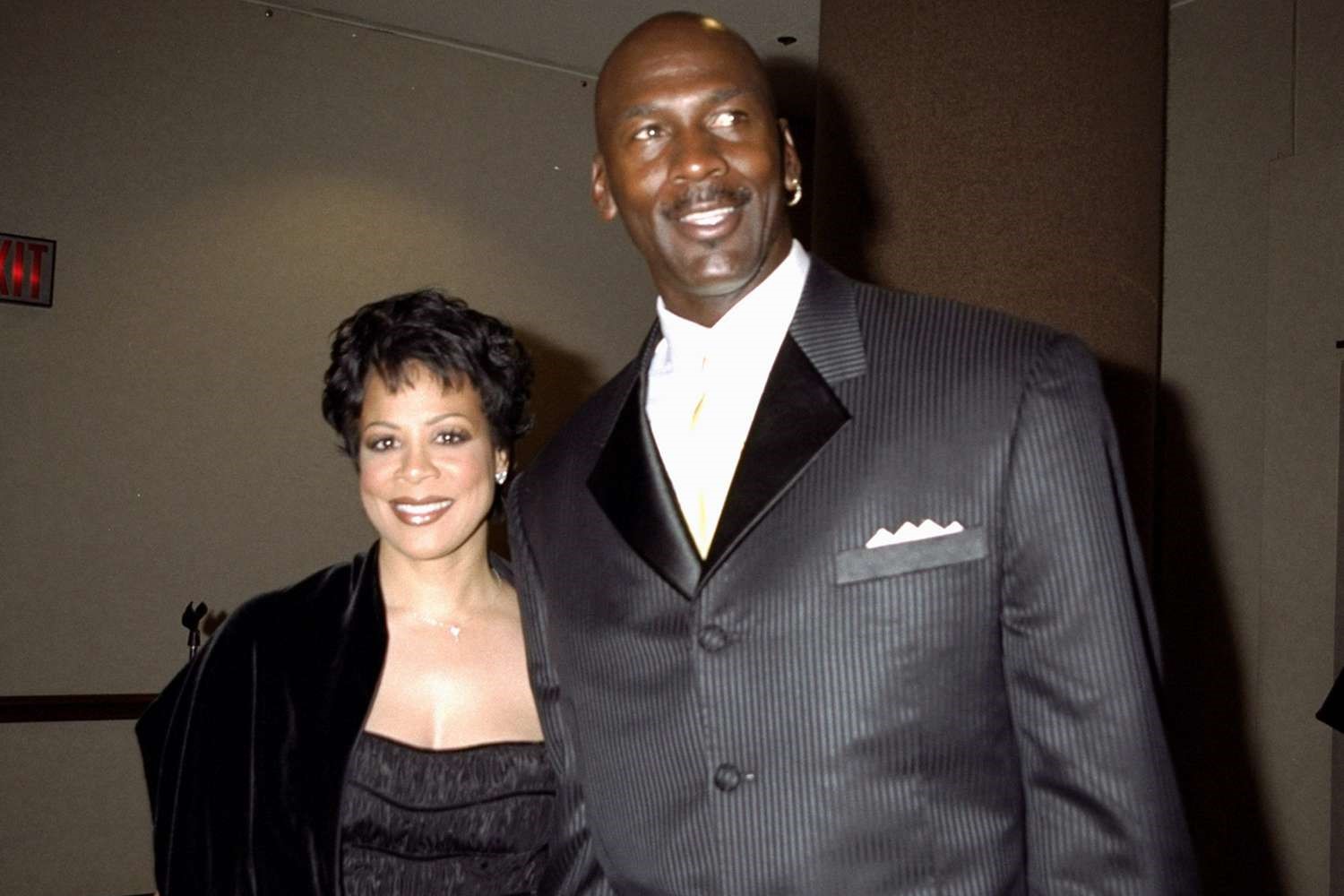Home>Sports>Barkley Says Jordan Would Average 40 Ppg In NBA Today


Sports
Barkley Says Jordan Would Average 40 Ppg In NBA Today
Published: January 25, 2024
Discover Barkley's opinion on how Michael Jordan would perform in today's NBA. Get insights on the potential for Jordan to average 40 points per game in the modern sports landscape.
(Many of the links in this article redirect to a specific reviewed product. Your purchase of these products through affiliate links helps to generate commission for Noodls.com, at no extra cost. Learn more)
Table of Contents
Introduction
The debate surrounding the greatest basketball player of all time has been a perennial topic among sports enthusiasts. Recently, NBA Hall of Famer Charles Barkley ignited a fervent discussion by asserting that Michael Jordan, widely regarded as one of the most dominant scorers in NBA history, would effortlessly average 40 points per game if he were playing in the current era. This bold statement has sparked intense deliberation among fans, analysts, and players alike, prompting a closer examination of the evolution of the NBA and the implications it holds for scoring prowess.
Barkley's assertion not only sheds light on Jordan's unparalleled scoring ability but also invites an exploration of the contrasting dynamics between the NBA of the past and the present. As we delve into this captivating discourse, it becomes evident that the landscape of professional basketball has undergone significant transformations, encompassing changes in defensive strategies, rule adaptations, and the overall tempo of the game. These factors collectively contribute to a compelling narrative that transcends mere statistical analysis, delving into the essence of athletic prowess and adaptability across different eras.
The assertion made by Barkley serves as a catalyst for a deeper examination of the interplay between individual talent and the contextual nuances that shape the competitive environment. By delving into this intriguing topic, we embark on a journey that transcends mere conjecture, offering a nuanced perspective that celebrates the enduring legacy of Michael Jordan while acknowledging the evolution of the sport he once dominated. As we navigate through the intricacies of this debate, we unravel the layers of basketball history, gaining a profound appreciation for the enduring impact of iconic players and the ever-evolving nature of the game they helped shape.
Barkley's Opinion on Jordan's Scoring Ability
Charles Barkley's assertion regarding Michael Jordan's scoring prowess in the contemporary NBA landscape has ignited a fervent discussion within the basketball community. Barkley, known for his candid and unfiltered commentary, boldly proclaimed that Jordan, renowned for his unparalleled scoring ability during his illustrious career, would effortlessly average 40 points per game if he were playing in the current era. This assertion not only underscores the magnitude of Jordan's scoring prowess but also prompts a deeper exploration of the factors that underpin such a bold claim.
Barkley's assertion is rooted in a profound appreciation for Jordan's transcendent talent and his ability to thrive in any era of basketball. Throughout his career, Jordan showcased an extraordinary blend of athleticism, skill, and basketball IQ, enabling him to dominate opponents and etch his name in the annals of basketball history. His relentless work ethic and unwavering commitment to excellence set him apart as a generational talent, earning him the moniker of "His Airness" and solidifying his status as an icon of the sport.
When evaluating Jordan's scoring ability, it is imperative to consider the myriad skills that defined his offensive repertoire. His unparalleled mid-range game, acrobatic finishes at the rim, and clutch shooting in pressure situations exemplified his scoring prowess. Moreover, his ability to navigate through defensive schemes and elevate his teammates elevated him to a league of his own. These attributes, coupled with an unwavering competitive spirit, enabled Jordan to amass a litany of scoring accolades and etch his name in the pantheon of basketball legends.
Barkley's assertion not only underscores Jordan's scoring acumen but also invites a reflection on the evolution of defensive strategies, rule adaptations, and the overall tempo of the game. By contextualizing Jordan's scoring prowess within the contemporary NBA landscape, Barkley prompts a reevaluation of the factors that influence scoring output in today's game. This incisive commentary serves as a testament to Jordan's enduring impact on the sport while igniting a spirited discourse that celebrates his indelible legacy.
In essence, Barkley's opinion on Jordan's scoring ability transcends mere conjecture, offering a poignant tribute to a player whose influence reverberates through the annals of basketball history. It serves as a poignant reminder of Jordan's transcendent talent and his enduring legacy, underscoring the timeless nature of his scoring prowess and its enduring relevance in the ever-evolving tapestry of professional basketball.
Comparison of NBA Eras
The comparison of NBA eras unveils a captivating juxtaposition between the playing conditions, defensive strategies, and overall dynamics that have shaped the evolution of professional basketball. The NBA of Michael Jordan's era, characterized by physicality and a more deliberate pace, stood in stark contrast to the modern game, which emphasizes pace-and-space offenses and strategic defensive rotations. This stark dichotomy underscores the transformative nature of the sport and the adaptive prowess required of players to thrive in distinct eras.
During Jordan's era, the physicality of the game was a defining attribute, with hand-checking and robust interior defense shaping the competitive landscape. Players navigated through bruising encounters, relying on mid-range jumpers and crafty footwork to carve out scoring opportunities. In contrast, the contemporary NBA emphasizes perimeter-oriented offenses, predicated on three-point shooting and rapid ball movement. This shift in offensive philosophy has redefined the parameters of scoring proficiency, necessitating a versatile skill set and an adept understanding of spacing and timing.
Moreover, the defensive strategies employed in each era reflect the evolving demands of the game. In Jordan's era, defensive schemes prioritized containment and physicality, often leading to low-scoring affairs characterized by gritty battles in the paint. Conversely, the modern NBA emphasizes strategic rotations, switching defenses, and an increased emphasis on perimeter containment. This evolution underscores the adaptability required of players to excel in an era defined by defensive versatility and tactical acumen.
The tempo of the game serves as another pivotal point of contrast between the two eras. Jordan's era witnessed a more deliberate pace, with half-court sets and isolation plays serving as primary offensive mechanisms. In contrast, the modern NBA thrives on a frenetic pace, characterized by fast breaks, rapid ball movement, and an emphasis on transition offense. This shift in tempo underscores the evolving demands placed on players, necessitating a seamless transition from half-court execution to open-court proficiency.
The comparison of NBA eras offers a compelling narrative that transcends statistical analysis, delving into the essence of athletic adaptability and the enduring legacy of iconic players. It underscores the transformative nature of professional basketball, celebrating the indelible impact of players like Michael Jordan while acknowledging the dynamic evolution of the sport they once dominated. As we navigate through this captivating discourse, we gain a profound appreciation for the enduring allure of basketball and the timeless narratives that define its storied history.
Evolution of Defensive Strategies
The evolution of defensive strategies in the NBA unveils a captivating narrative of adaptation and innovation, reflecting the dynamic interplay between offensive ingenuity and defensive resilience. Across different eras of professional basketball, defensive tactics have undergone profound transformations, mirroring the shifting demands of the game and the strategic imperatives imposed by evolving offensive philosophies.
During Michael Jordan's era, defensive strategies were characterized by physicality and containment. Hand-checking, a defensive technique that involved using hands to impede offensive players' progress, was prevalent, adding a layer of physicality to perimeter defense. Additionally, interior defense relied on robust post play and strategic positioning to deter scoring opportunities. The emphasis on physical containment and deliberate defensive rotations underscored the demanding nature of defense in an era defined by bruising encounters and low-scoring battles.
In contrast, the modern NBA has witnessed a paradigm shift in defensive strategies, marked by an increased emphasis on versatility and strategic rotations. With the advent of pace-and-space offenses and perimeter-oriented scoring, defensive schemes have evolved to prioritize perimeter containment and strategic switching. Players are now tasked with navigating through complex defensive rotations, seamlessly transitioning from on-ball defense to help-side coverage, and effectively contesting perimeter shots. This shift underscores the adaptive prowess required of modern defenders, who must possess the agility to guard multiple positions and the defensive acumen to disrupt the fluidity of contemporary offenses.
Furthermore, the rise of analytics has profoundly influenced defensive strategies, leading to a greater emphasis on data-driven decision-making and tactical adjustments. Teams now leverage advanced statistical insights to optimize defensive schemes, identify scoring tendencies, and tailor their defensive approach to counteract opponents' offensive strengths. This analytical revolution has engendered a strategic renaissance in defensive tactics, empowering teams to craft nuanced defensive game plans that exploit opponents' vulnerabilities and mitigate scoring threats.
The evolution of defensive strategies in the NBA serves as a testament to the adaptive nature of the sport, underscoring the perpetual quest for defensive innovation and tactical acumen. As the game continues to evolve, defensive strategies will undoubtedly undergo further transformations, driven by the relentless pursuit of defensive excellence and the strategic imperatives imposed by the ever-evolving landscape of professional basketball.
Impact of Rule Changes
The impact of rule changes on the NBA's competitive landscape has been profound, ushering in a transformative shift in playing dynamics and strategic imperatives. Over the years, the NBA has implemented a series of rule changes aimed at fostering a more fluid and high-scoring style of play, thereby redefining the parameters of offensive proficiency and defensive adaptability.
One of the most significant rule changes that has reverberated throughout the league is the implementation of defensive three-second violations. This alteration, designed to discourage excessive defensive clogging in the paint, has catalyzed a paradigm shift in offensive spacing and scoring opportunities. By penalizing prolonged defensive presence in the key, this rule change has incentivized teams to adopt perimeter-oriented offenses, predicated on three-point shooting and strategic floor spacing. Consequently, players are now tasked with navigating through more open lanes and capitalizing on enhanced scoring opportunities, thereby reshaping the offensive dynamics of the game.
Moreover, the enforcement of stricter foul regulations has had a discernible impact on scoring output and offensive efficiency. The crackdown on physicality and excessive contact has empowered offensive players to assert their scoring prowess with greater freedom and confidence. This shift has elevated the prominence of perimeter scoring and agile playmaking, as players capitalize on the reduced defensive resistance to orchestrate high-octane offensive sequences. Additionally, the emphasis on protecting shooters from undue contact has elevated the significance of three-point shooting, amplifying its role as a primary scoring weapon in the modern NBA.
Furthermore, the implementation of instant replay and officiating reviews has introduced a layer of precision and accountability to game adjudication, ensuring that pivotal game-altering decisions are subject to meticulous scrutiny. This technological advancement has engendered a more equitable and transparent adjudication process, mitigating the impact of erroneous calls and enhancing the integrity of game outcomes. Additionally, the utilization of instant replay has facilitated the accurate assessment of critical scoring plays, thereby safeguarding the sanctity of scoring statistics and reinforcing the competitive equity of the league.
In essence, the impact of rule changes on the NBA transcends mere regulatory adjustments, underscoring their transformative influence on the competitive dynamics of professional basketball. As the league continues to evolve, rule changes will undoubtedly shape the strategic imperatives and playing styles, perpetuating a dynamic interplay between offensive innovation and defensive adaptability.
Conclusion
In conclusion, Charles Barkley's assertion regarding Michael Jordan's hypothetical scoring prowess in the contemporary NBA landscape serves as a catalyst for a profound exploration of the interplay between individual talent and the contextual nuances that define the competitive environment. Barkley's bold claim that Jordan would effortlessly average 40 points per game in today's NBA not only underscores the enduring legacy of one of basketball's most iconic figures but also prompts a nuanced reflection on the evolution of the sport and the transformative dynamics that have shaped its competitive landscape.
The comparison of NBA eras illuminates a compelling narrative of adaptation and innovation, underscoring the contrasting playing conditions, defensive strategies, and overall tempo that distinguish different epochs of professional basketball. From the physicality and deliberate pace of Jordan's era to the modern emphasis on pace-and-space offenses and strategic defensive rotations, the evolution of the NBA reflects the adaptive prowess required of players to thrive in distinct eras. This juxtaposition celebrates the enduring allure of basketball while acknowledging the dynamic evolution of the sport and the indelible impact of iconic players like Michael Jordan.
Furthermore, the evolution of defensive strategies and the impact of rule changes underscore the transformative nature of the NBA, emphasizing the perpetual quest for innovation and strategic acumen. The shift from physical containment and deliberate defensive rotations to versatile, data-driven defensive schemes exemplifies the adaptive nature of the sport, reflecting the strategic imperatives imposed by evolving offensive philosophies and the relentless pursuit of defensive excellence.
Ultimately, Barkley's assertion serves as a poignant tribute to Michael Jordan's transcendent talent and enduring legacy, igniting a spirited discourse that celebrates the timeless narratives of basketball history. It prompts a deeper appreciation for the adaptive prowess required of players to thrive across different eras, underscoring the enduring relevance of scoring proficiency and the enduring impact of iconic players on the ever-evolving tapestry of professional basketball.
As we navigate through this captivating discourse, we gain a profound appreciation for the enduring allure of basketball and the timeless narratives that define its storied history. Barkley's assertion not only celebrates the enduring legacy of Michael Jordan but also invites us to embrace the transformative nature of the sport, perpetuating a dynamic interplay between individual brilliance and the contextual nuances that define the competitive landscape.














